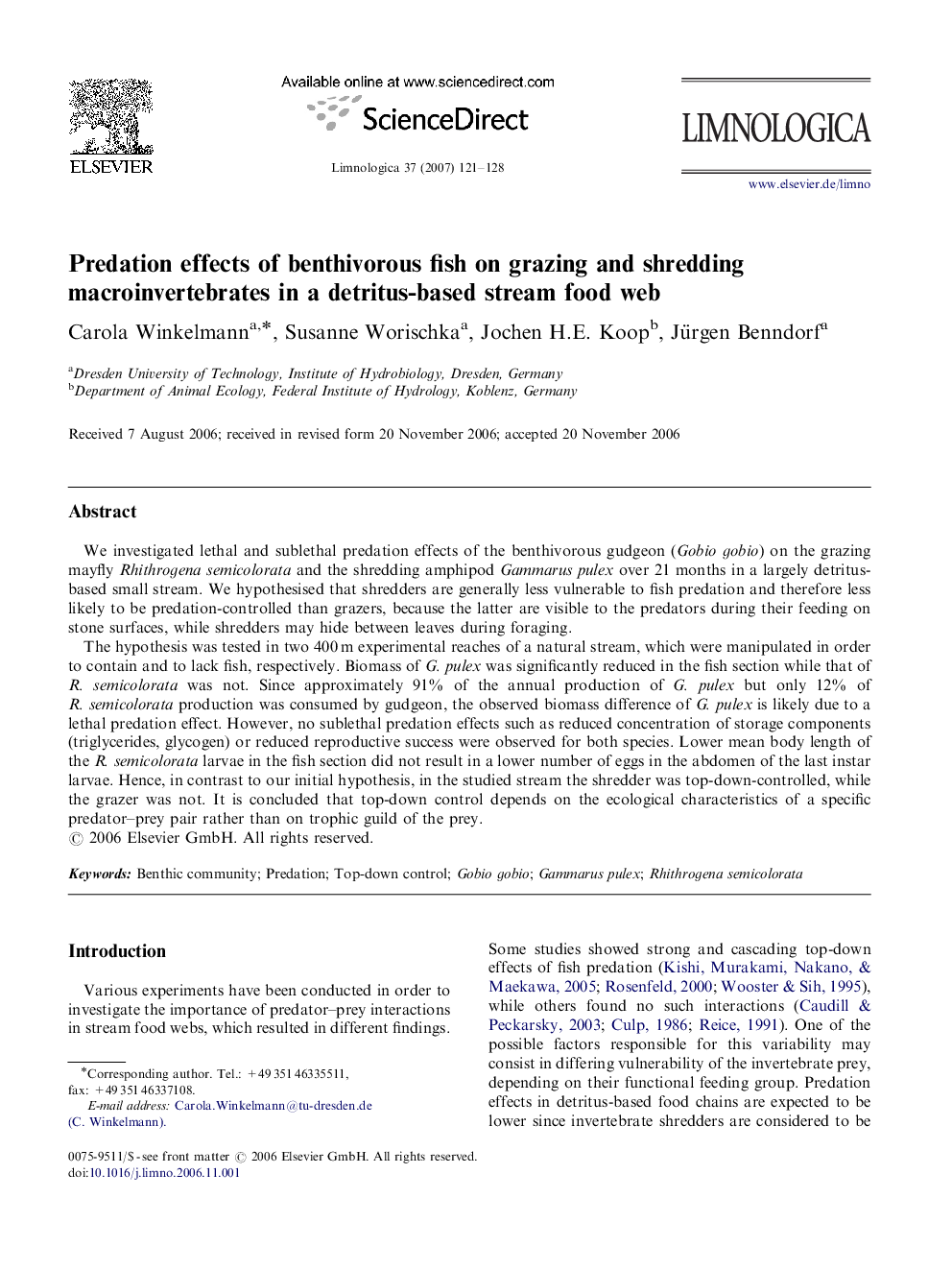| Article ID | Journal | Published Year | Pages | File Type |
|---|---|---|---|---|
| 4400626 | Limnologica - Ecology and Management of Inland Waters | 2007 | 8 Pages |
We investigated lethal and sublethal predation effects of the benthivorous gudgeon (Gobio gobio) on the grazing mayfly Rhithrogena semicolorata and the shredding amphipod Gammarus pulex over 21 months in a largely detritus-based small stream. We hypothesised that shredders are generally less vulnerable to fish predation and therefore less likely to be predation-controlled than grazers, because the latter are visible to the predators during their feeding on stone surfaces, while shredders may hide between leaves during foraging.The hypothesis was tested in two 400 m experimental reaches of a natural stream, which were manipulated in order to contain and to lack fish, respectively. Biomass of G. pulex was significantly reduced in the fish section while that of R. semicolorata was not. Since approximately 91% of the annual production of G. pulex but only 12% of R. semicolorata production was consumed by gudgeon, the observed biomass difference of G. pulex is likely due to a lethal predation effect. However, no sublethal predation effects such as reduced concentration of storage components (triglycerides, glycogen) or reduced reproductive success were observed for both species. Lower mean body length of the R. semicolorata larvae in the fish section did not result in a lower number of eggs in the abdomen of the last instar larvae. Hence, in contrast to our initial hypothesis, in the studied stream the shredder was top-down-controlled, while the grazer was not. It is concluded that top-down control depends on the ecological characteristics of a specific predator–prey pair rather than on trophic guild of the prey.
